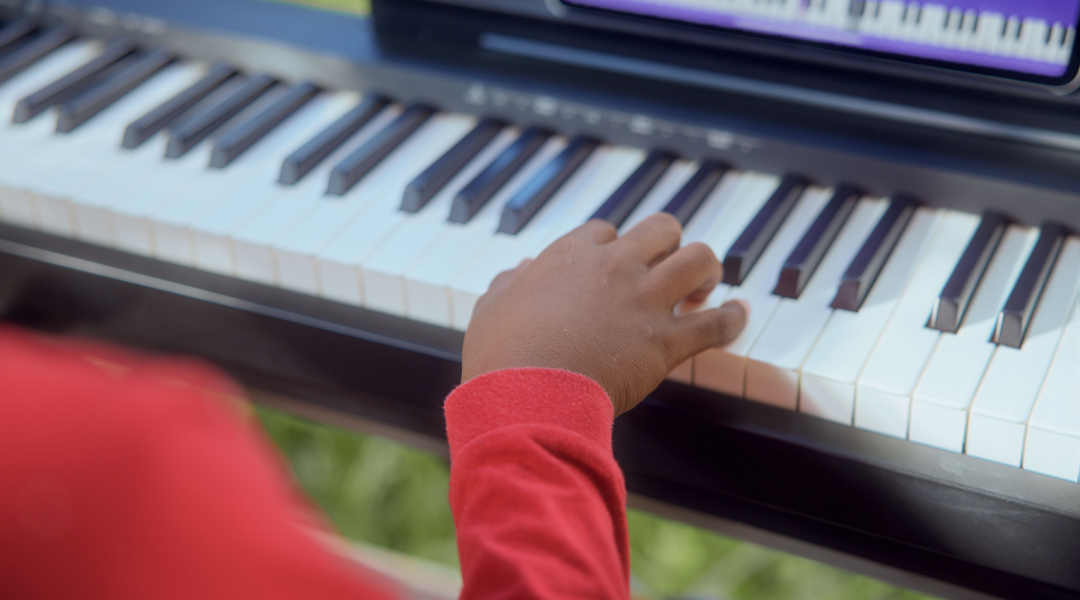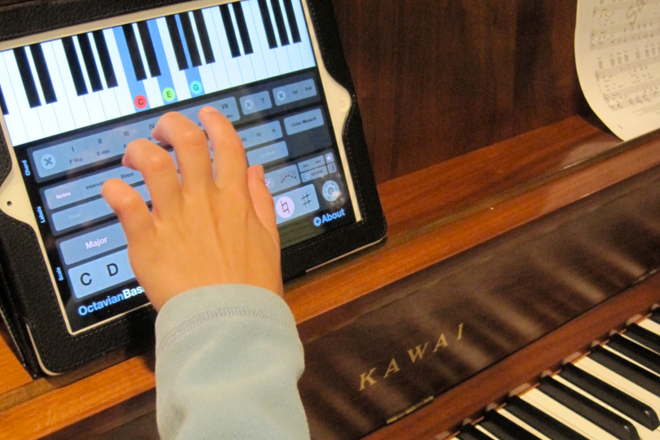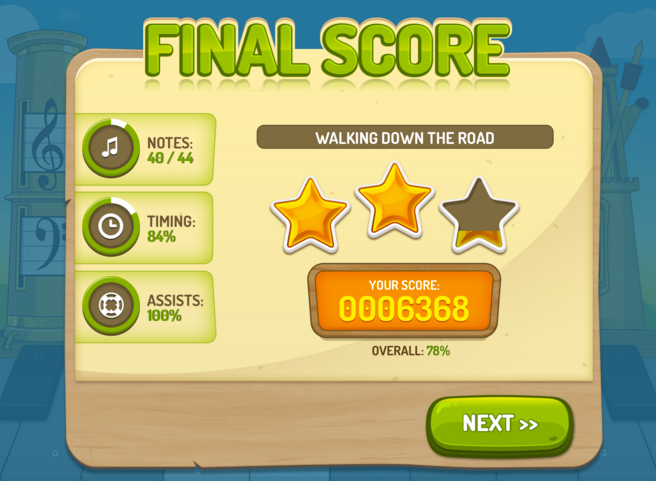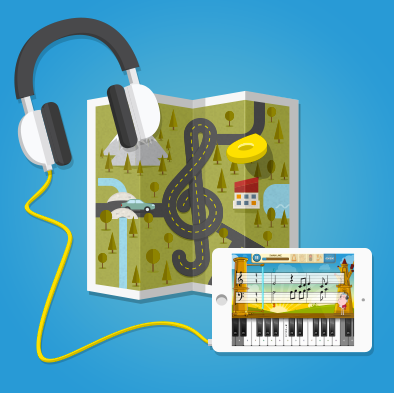Piano Music Notes for Beginners
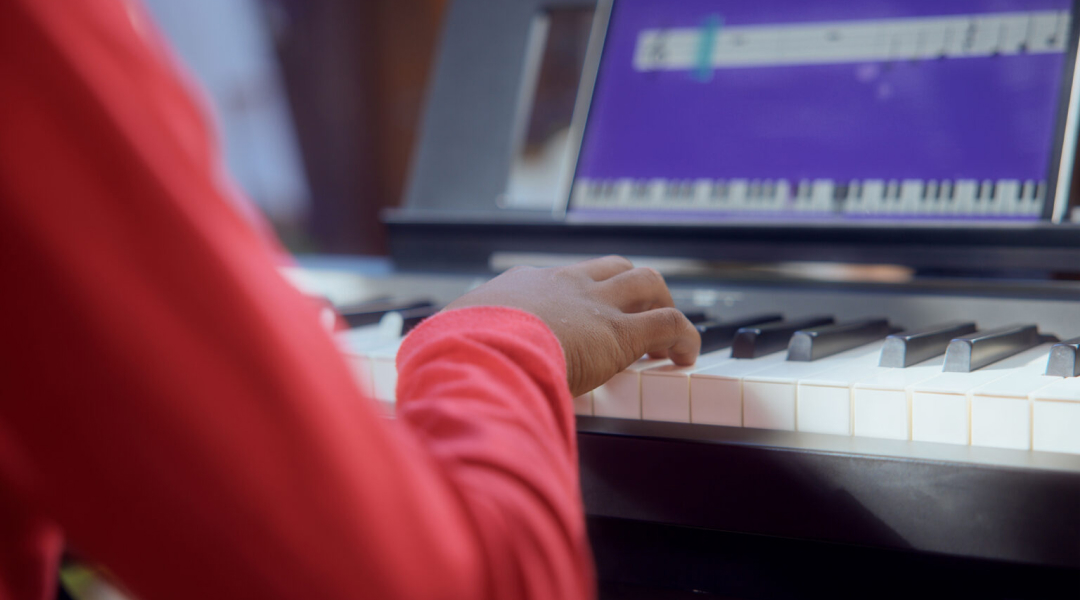
Learning the piano isn’t so bad when you know the basics of reading notes. In this short article, we walk you through the basics of piano notes for beginners.
When you see sheet music for the first time, it could look like some kind of cave-man script from another eon. For the beginner, this can be very unsettling.
We got you. Let’s begin by walking through the fundamentals of all you need to know to start reading music notes and playing them on piano.
Reading music notes for beginners
Music is a language of sound.
When an instrument produces a sound, that sound vibrates at a particular frequency or pitch.
In Western music, we use twelve specific frequencies, called notes. These twelve frequencies repeat themselves across high and low registers of pitch.
In other words, we call the frequency of a sound pitch and organize them in a system of symbols we call notes.
We use letters from A to G to name seven of the twelve notes and use sharps and flats for the remaining five. The symbol sharp (#) means slightly higher than the note it’s in front of, and flat (b) means slightly lower.
Flat and sharp notes have two names, depending on the context. In the end, it looks something like this:
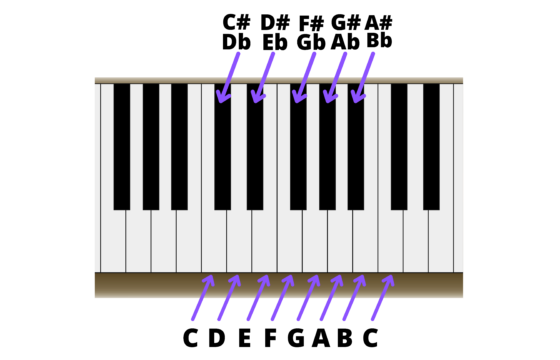
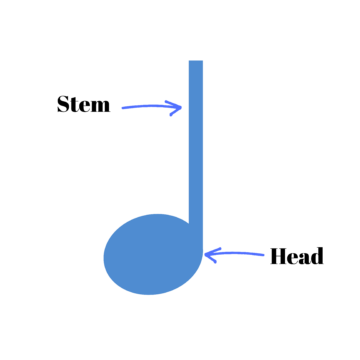
Notes appear in various ways, but all have a circle and sometimes a line. The vertical line attached to the note is called a stem. The circle is the head, and it could be full or empty. These determine the rhythmic value of the note.
You can write and read all of these notes on a visual structure called a staff.
Learn more about How to Read Sheet Music on our blog.
The staff and the ledger lines
A staff is a stack of five horizontal lines.

There are five lines and four spaces between them. Each line and space represent a note, with the low notes on the bottom lines and the high notes on the top.

Of course, the range of instruments usually exceeds the lines of the staff. To write notes below or above the staff, we use ledger lines. These are short horizontal lines written through or below the circle of the note.
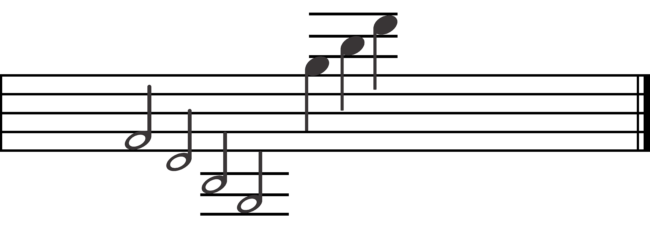
We write piano notes on a grand staff with ten lines altogether, split into two groups of five.

Grand staffs are for instruments with a wide range of pitch or music that requires two separate but simultaneous parts (like a right hand and left hand).
The middle C note, which is more or less at the center of the keyboard, sits between the two staffs on a ledger line.
The clefs
A clef symbol appears on the far left side of the staff. It indicates which note falls on which line. The range of your instrument determines the clef you use so that the notes are in the right places.

You use the treble clef for piano to write music for your right hand. The center of the circle of the treble clef sits on the second line from the bottom of the staff and indicates the note G. This is why it’s also known as G clef.

We use the bass clef to write music for instruments with a lower register, such as the piano’s left hand or a bass guitar. The line between the two dots of the bass clef is an F below the middle C. This is why it’s also known as the F clef.
Key signature and time signature
There are two more crucial pieces of information at the beginning and to the right of the clef.
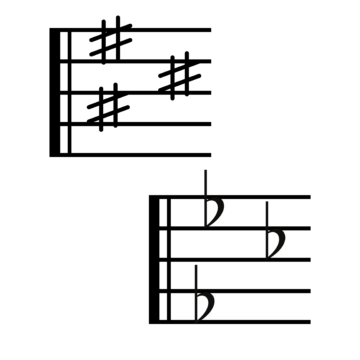
The first is the key signature. It tells you how many sharps or flats are in the music. If a sharp or flat appears in the key signature, it will not appear in notes. If the composer adds an extra sharp or flat beyond the key signature, they write it next to the notes.
The time signature is to the right of the key signature, just before the actual notes appear. This indicates the division of rhythm in the song, alongside the bar lines, which create vertical divisions along the horizontal staff lines to group the notes according to rhythm value.

The top number of the time signature is the number of beats per bar. The bottom number of the time signature is the type of beat (half note, quarter note, eighth note). You can read more about time signatures in our blog post How to Play Music in 4/4.
Learn to read music notes with Simply Piano
If you practice on your own, your progress with piano learning can become stuck and frustrating. Download the Simply Piano app to learn all the piano basics at your own pace and space.
Simply Piano is highly popular and has even won awards like Apple’s Editor’s Choice Award, Parents’ Choice Award, and Best App from Google Play.
The app works with any piano or keyboard and has the following features:
- Tons of fun songs like Imagine, Chandelier, All Of Me, and also J.S. Bach.
- Courses for different musical tastes and playing levels.
- Step-by-step learning for everything from reading sheet music to playing chords.
- Slow down library songs to choose your own pace for easy learning.
Simply Piano currently has 27 different courses divided into two streams: Soloist and Chords. You don’t have to choose between them; you can do them simultaneously, one after the other, or just focus on one. You immediately receive access to two free courses when you download the app. Once you purchase the premium subscription, you receive access to all lessons and songs, updated and expanded monthly.
Make a note of this 🙂
When you dive into a new world of concepts, language and practice, it’s very common to feel scared and insecure. Have faith in the process, and don’t rush the learning. Learn the limitations of your capacity for new information, and try to touch something new daily. With time, persistence, and patience, you can acquire this new language, and before you know it, you are speaking music!






